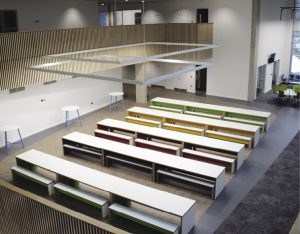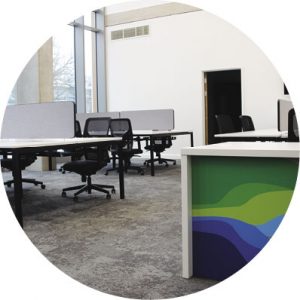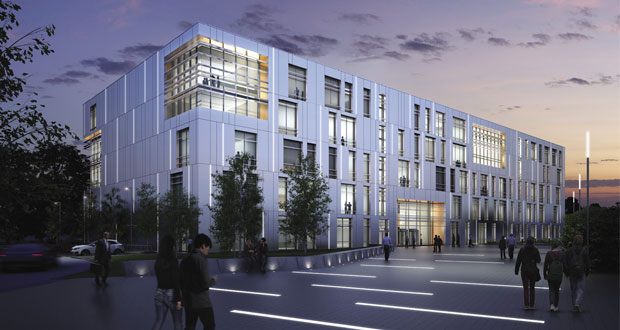We began evolving the M&E base design two years prior to the project going to site. Using extensive BIM modelling, this enabled us to develop a new solution that met all requirements in terms of efficiency, compliance and budget.
The latest technology, including new digital tools and signage, is prevalent across the site to help improve teaching standards as well as the overall experience for students. This is supported by highly-effective data infrastructure including more than 1,800 data points.

A total of 228 photovoltaic panels were incorporated as well as a 50kW air source heat pump. There is also a Building Management System (BMS) featuring a distributed bus system that allows devices to exchange information directly. Requiring reduced cable lengths, it can integrate products from different manufacturers within a single system. This makes it easier to maintain and adapt to control energy consumption, reducing costs.
One of the biggest challenges in terms of building services was the design of the building. There is a trapezium-shaped atrium measuring 24m wide and over 21m tall, which takes up nearly a third of the building. A total of 81 teaching and learning rooms fork off this central space. Building services, including ventilation and smoke ventilation systems, had to be fully integrated into this unusually shaped area.

Bringing together education, enterprise and the local community, the new teaching block was handed over on time and without any defects. The impressive building demonstrates the extensive facilities and quality standards that are now expected in many new educational institutions. This is driving the need for more skilled M&E contractors, collaborative ways of working, and building services solutions which can meet a vast range of requirements now and in the future.
The guidelines on ventilation include:
- Standards for all spaces including halls, classrooms and specialist practical areas such as science labs and design and technology spaces. Setting maximum levels of carbon dioxide in teaching spaces and minimum ventilation rates in practical spaces and specialist accommodation, e.g. for pupils with special needs. The guidelines on thermal comfort include:
- Guidance on room temperatures and cold draughts in order to provide a comfortable environment suitable for teaching and learning, year round.
- Guidance on designing for children with disabilities who are less able to regulate their temperature than mainstream pupils.
- Detailed calculation methods for thermal comfort. Adaptive thermal comfort calculations have been introduced to prevent summertime overheating based on the latest research on how people adapt to higher temperatures. These calculations use variable maximum indoor temperatures that depend on the outside temperature. This helps to avoid the unnecessary use of air conditioning by using passive measures such as night cooling and thermal mass to cool spaces in summertime. The guidelines on indoor air quality include:
- A summary of the health effects of indoor air pollutants based on the World Health Organisation guidelines for Indoor Air Quality and the latest advice from Public Health England. This describes pollutant sources, both internally generated such as formaldehyde given off by furniture and external pollutants including nitrogen dioxide which are a major cause of concern for respiratory health.
- Guidance on how to meet the maximum exposure levels for pollutants. Ways to reduce the level of outdoor air pollutants, such as nitrogen dioxide and particulates from traffic, in the supply air. This includes the location of air intakes and exhausts, the management of openable windows, and filtration of supply air.
- Advice on reducing sources of indoor pollutants, e.g. using materials that are low emitters of pollutants and dealing with pollutants generated by 3D printers and laser cutters.
REFERENCE NOTES
(i) www.gov.uk/government/publications/building-bulletin-101-ventilation-for-school-buildings
(ii) https://isgltd.com/en/news/richmond-upon-thames-college-tops-out





